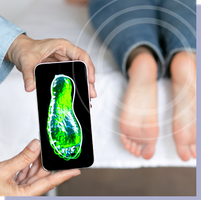Introduction: The Invisible Link Between Chronic Pain and Mental Health
Many people experience pain in their bodies from time to time. But for some, this pain doesn’t go away. It stays and becomes a constant companion. This is known as chronic pain. But did you know that chronic pain doesn’t just affect your body? It can also have a major impact on your mental health. In this article, we’ll explore the complex relationship between chronic pain and mental health, and why it’s so important to address both.
Understanding Chronic Pain Symptoms
Chronic pain is pain that lasts for a long time. It can be caused by many different things, such as an injury that hasn’t healed properly, illness, or even stress. Chronic pain can be very difficult to live with. It can make it difficult to do everyday things like go to work or school, spend time with friends and family, or even just get out of bed in the morning.
Mental health is just as important as physical health. How we think, feel, and behave. When our mental health is good, we can better cope with stress and work productively. But when it’s not, it can be hard to do those things. And just like chronic pain, mental health problems can be caused by many different things, including stress, trauma, and genetics.
The connection between chronic pain and mental health
Chronic pain and mental health are deeply connected. People with chronic pain are more likely to suffer from mental health issues like depression and anxiety. And people with mental health issues are more likely to experience chronic pain. That’s because the brain plays a big role in both how we feel pain and how we deal with stress and emotions. When one is out of balance, it can throw the other off balance.
In the following sections, we will delve deeper into the impact of chronic pain on mental health, how to cope with chronic pain, and resources available to those suffering from chronic pain.
Chronic pain is a complex health issue that affects millions of people around the world. It’s not just a physical sensation, but can also affect your emotional well-being. To better understand this condition, let’s delve into its definition and common types of chronic pain.
Chronic Pain Definition: Medical Definition
Chronic pain is defined as any pain that persists for 12 weeks or more, even after the injury or illness that caused the initial pain has healed. It can last for months or even years. Unlike acute pain, which warns of a potential injury, chronic pain persists and sometimes remains unresolved despite ongoing medication or therapy.
Common types of chronic pain
Chronic pain can manifest in many different forms. Here are some of the most common types:
Back pain: Often caused by poor posture, weight lifting, or injury, this is one of the most common types of chronic pain.
Headache: Chronic headaches, including migraines, can last for hours to days. The pain can be so severe that it interferes with daily activities.
Joint pain: This is a long-term condition that causes pain and inflammation in the joints. It can affect people of all ages, including children.
Neurogenic pain: This is pain caused by damage to the nervous system, including conditions such as sciatica and trigeminal neuralgia.
Pain due to illness: Can be caused by cancer or treatments such as chemotherapy or radiation.
Understanding the nature and type of your chronic pain is the first step toward effectively treating it. Remember, you are not alone on this journey, and there are resources available to help you cope with chronic pain.
Pain management techniques
Living with chronic pain can be challenging, but there are various techniques that can help with the discomfort. These methods range from traditional medication to physical therapy and even alternative treatments. Let’s explore each of these:
Medication: Medication is often the first line of defense against chronic pain. Over-the-counter pain relievers like ibuprofen or acetaminophen can be effective for mild to moderate pain. For severe pain, doctors may prescribe stronger medications. However, it’s important to remember that while medication can help manage pain, it should be used as part of a broader treatment plan.
Physical therapy: Physical therapy is another common method of managing chronic pain. A physical therapist can teach you exercises to help improve your mobility and strength, which can in turn reduce pain. For example, if you have chronic back pain, certain stretches and strengthening exercises can help relieve discomfort.
Alternative Therapies: Alternative therapies are becoming increasingly popular for treating chronic pain. They include methods such as acupuncture, massage, yoga, and meditation. While these methods may not work for everyone, many people find them effective in relieving their pain. Remember, it is important to discuss any new treatment with your doctor before starting.
In conclusion, treating chronic pain involves a combination of techniques. It is important to consult with your doctor to find the best approach for you. Remember, everyone’s experience with pain is unique, so what works for one person may not work for another. The key is to remain patient and persist in your journey to pain relief.
The impact of chronic pain on mental health
Chronic pain is not just a physical condition. It also has a significant impact on mental health. The constant discomfort and limitations it imposes can lead to psychological distress. We will delve deeper into the psychological effects of chronic pain.
Depression
Depression is a common consequence of chronic pain. The ongoing pain can lead to feelings of hopelessness and despair. About two-thirds of people living with chronic pain have experienced depression.
anxiety
Anxiety often accompanies chronic pain. The lack of control over pain can cause significant worry and fear. A study published in the Journal of Pain found that 45% of patients with chronic pain also suffer from anxiety disorders.
pressure
Chronic pain can also lead to high levels of stress. The constant discomfort and struggle with pain can cause a lot of stress. Over time, this stress can make the pain worse, creating a destructive cycle.
Case Study: Chronic Pain and Depression
General background
Meet Maor, a 45-year-old man who has been dealing with chronic back pain for over a decade. His pain began after a work-related injury and has since become a constant part of his life. Despite trying various treatments, the pain continued. Over time, Maor noticed a change in his mood. He began to feel down and lost interest in activities he once enjoyed. He was eventually diagnosed with depression.
Findings: Maor’s case is not unique. Many people living with chronic pain also experience symptoms of depression. According to the American Pain Society, about 77% of people report feeling depressed due to their chronic pain. Constant pain can lead to feelings of hopelessness and despair, which affect a person’s mental health.
Moreover, the link between chronic pain and depression is bidirectional. This means that not only can chronic pain lead to depression, but depression can also worsen the perception of pain, creating a cycle that is difficult to break.
In conclusion, Maor’s case highlights the significant impact that chronic pain can have on mental health. It highlights the importance of addressing both the physical and emotional aspects of chronic pain. Treatment plans should not only focus on relieving physical pain but also on improving mental health. This comprehensive approach can help break the cycle of chronic pain and depression, and improve people’s quality of life.
Coping with chronic pain
Living with chronic pain can be challenging. However, there are various mental health techniques that can help you manage your pain more effectively. These methods focus on the mind-body connection and can provide relief.
awareness
Mindfulness is a form of meditation in which you focus on being intensely aware of what you are feeling and sensing in the moment, without interpretation or judgment. Mindfulness practice includes breathing techniques, guided imagery, and other exercises to calm the body and mind and help reduce pain.
Cognitive behavioral therapy (CBT)
CBT is a type of psychotherapy that can help you understand and change thought patterns that lead to harmful behaviors or feelings of distress. For chronic pain, CBT can help you understand the role of pain in your life and develop new coping strategies.
Support groups: Joining a support group can be a critical component of managing your pain. In a support group, you can share experiences with others who are going through the same struggles. They can offer understanding, advice, and encouragement.
Remember, it is essential to consult with your doctor before beginning any treatment. They can guide you on the best approach based on your specific condition and health needs.
Chronic pain treatment options
When it comes to treating chronic pain, there are several options. Each method has its own advantages and is suitable for different types of pain. Let’s look at three common treatment options: physical therapy, psychotherapy, and medication.
Physiotherapy
Physical therapy is a common treatment for chronic pain. It involves exercises and movements designed to improve mobility and strength. This therapy can help reduce pain and improve quality of life. For example, one study showed that 70% of patients with chronic lower back pain reported significant improvement after undergoing physical therapy.
psychotherapy
Psychotherapy, also known as talk therapy, can be an effective way to treat chronic pain. It helps patients understand and manage the emotional aspects of chronic pain. Cognitive behavioral therapy (CBT), a type of psychotherapy, has been found to be particularly effective. One study found that 58% of chronic pain patients who underwent CBT reported a significant reduction in their pain levels.
Drug treatment
Medication involves the use of medications to control pain. This can include over-the-counter pain relievers, prescription medications, or even certain types of antidepressants. It is important to use them under the guidance of a professional to avoid possible side effects. According to a study, 65% of chronic pain sufferers reported improved pain control with proper medication management.
Remember, the best treatment option depends on your individual situation and the type of pain you have. Always consult a professional before starting any new treatment plan.
Support forums: Support forums are online communities where people with similar experiences can share their stories, provide advice, and offer emotional support. Forums like the American Chronic Pain Association’s ACPA Community provide a safe space for chronic pain sufferers to connect and share.
Educational materials: Educational materials can include articles, e-books, videos, and more. They provide in-depth information about chronic pain, its effects on mental health, and strategies for treating both. Sites like the National Institute of Neurological Disorders and Stroke offer a wealth of educational materials about chronic pain and mental health.
Chronic Pain Therapists: Chronic pain therapists can provide effective strategies for managing pain and improving mental health. They can help you understand the connection between your physical pain and emotional well-being, and provide techniques for managing stress, anxiety, and depression that may be related to your chronic pain. They can also help you develop a personalized plan that works for you.
Pain clinics: Pain clinics offer comprehensive care for people with chronic pain. These clinics have a team of healthcare professionals who work together to provide a holistic approach to pain management. This may include medication, physical therapy, psychological support, and alternative therapies such as acupuncture or massage. Pain clinics can provide a valuable resource for reducing chronic pain.
Remember, reaching out for help is not a sign of weakness, but a step toward regaining control of your life. Use the various resources available to help with your chronic pain and improve your mental health.
Conclusion: The importance of treating both chronic pain and mental health
As we have summarized, it is essential to understand the interrelationship between chronic pain and mental health. Both aspects are essential in maintaining overall well-being and should not be considered in isolation.
Chronic pain is not just a physical problem. It has a profound impact on mental health, leading to conditions like depression and anxiety. It is essential to approach treatment holistically, addressing both the physical pain and the mental health aspects. Resources are available to help treat both, including therapy techniques and mental health support.
More research is needed to fully understand the relationship between chronic pain and mental health. Future research should focus on developing more effective treatments that address both aspects simultaneously. This could include exploring new techniques, therapies, and medications, as well as exploring the role of lifestyle changes.
In conclusion, living with chronic pain can be challenging, but it’s important to remember that you are not alone. There are resources and treatments available that can help. It’s essential to reach out for help if you’re struggling, and remember, treating both physical pain and mental health is key to improving your quality of life.









